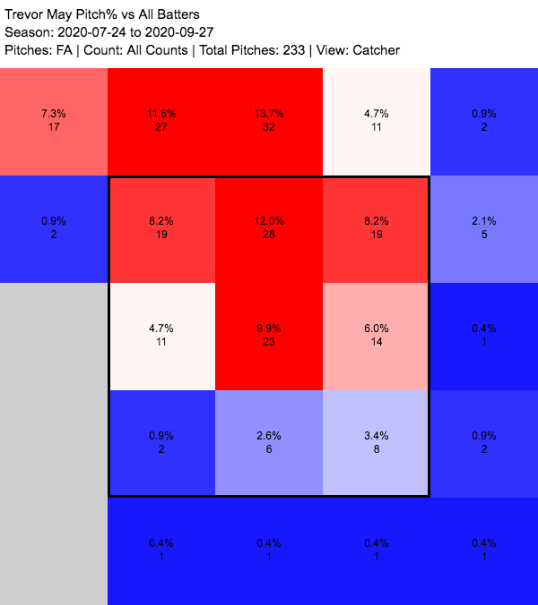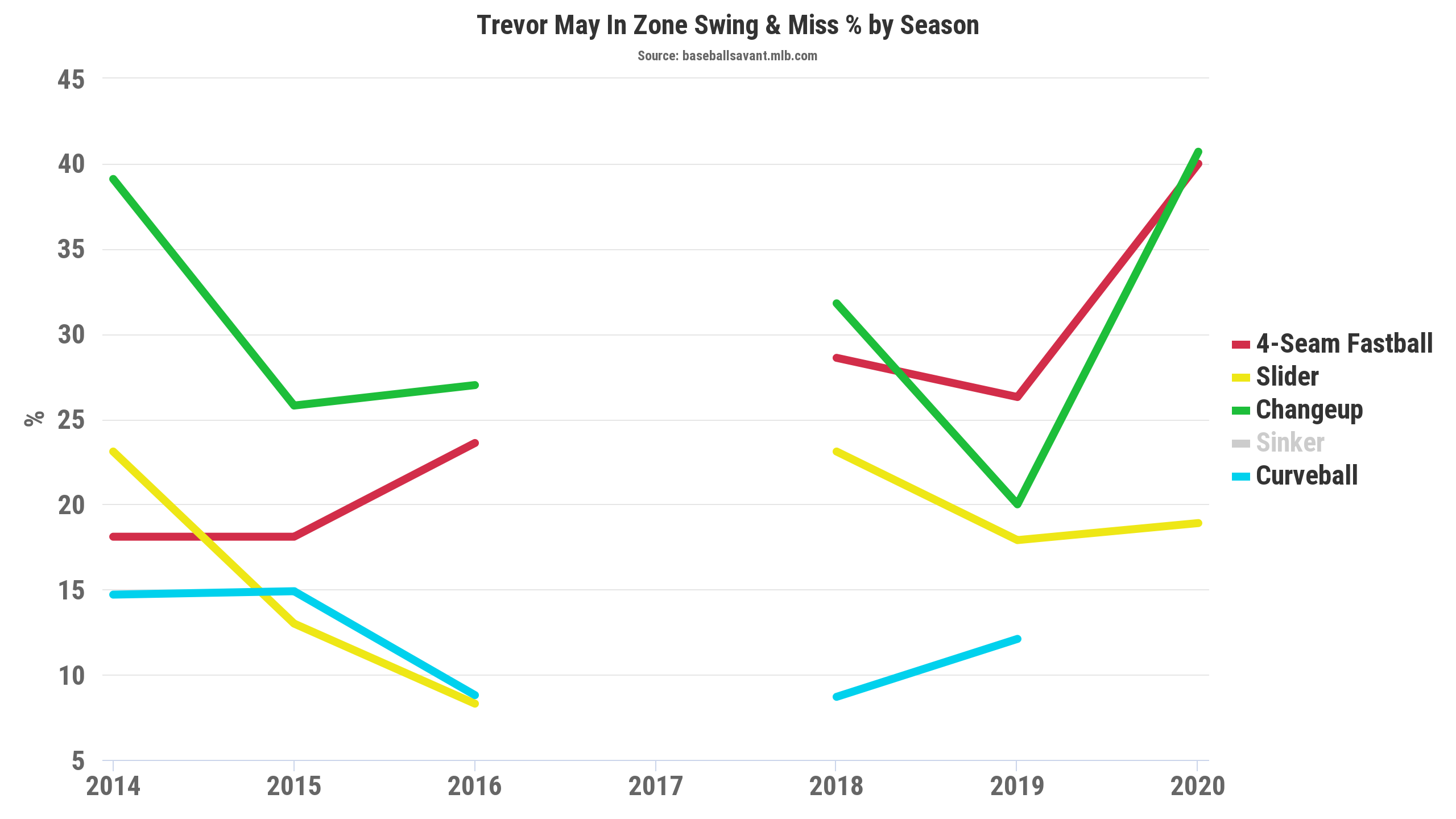Mets fans have waited a long time to be as optimistic about an offseason as they are this winter. After decades in which conservative spending was only part of the self-destructive tactics the Wilpons inflicted upon the franchise, new owner Steve Cohen has stated plainly he bought the team with the purpose of buying up talent and transforming the team into something “iconic.” With no shortage of star players available both in free agency and via trade, Mets fans can let their imaginations run wild imagining what the roster could look like in 2021 and beyond.
Before this week, though, the Mets had yet to make a major move of any kind. That finally changed Tuesday, when they signed former Twins reliever Trevor May to a two-year deal. SNY.tv’s Andy Martino was the first to report a completed deal, while MLB Network’s Jon Heyman was first on the terms.
May ranked 21st on Craig Edwards’ Top 50 Free Agents list at the beginning of the winter, the second reliever listed behind ex-A’s closer Liam Hendriks, and ahead of big names such as Brad Hand, Blake Treinen and Kirby Yates. That might seem like an aggressive ranking considering his age, injury history, and production. At 31, it isn’t as though May is hitting the market as a young man. He has a Tommy John surgery in his past, which cost him the 2017 season and a good portion of ’18. Since his return from that injury, he’s posted a 3.19 ERA, 3.56 FIP and 1.8 WAR in 113 games. Those are perfectly solid numbers, but not what you would call elite.
But as Edwards notes, the ranking isn’t so much a reflection of May’s past as it is the potential teams see in him. That sounds strange to say about an over-30 pitcher with a surgically rebuilt elbow, but it does apply here. When May broke into the majors in 2014, his average fastball velocity sat around 92.6 mph. When he returned from Tommy John surgery in ’18, he was at 94. Then he jumped up to 95.5 in ’19 and 96.3 last season. He’s also increased the spin rate on his fastball in each of the past two years. May’s stuff just keeps getting better despite him being 12 years into his professional career.
May aims high with that fastball to make it even tougher to catch up with. Of the 233 fastballs he threw in 2020, nearly 70% were in the top third of the strike zone or higher:

Opponents swung and missed on 46.9% of the cuts they took at May’s fastball in 2020, a rate usually reserved for a good breaking ball; the league as a whole ran a whiff rate of 22.6% against four-seamers. He also generated whiff rates of 34.4% against his slider — a pitch with hard vertical drop that May says has more in common with his old curveball than the slider he had when he first broke into the majors — and 38.7% against his changeup, which was actually his most difficult-to-hit pitch inside the strike zone last season.

Put all of that together, and May had the eighth-highest whiff rate in all of baseball last year. His strikeout percentage of 39.6% ranked ninth among pitchers with 20 innings thrown. He’s one of the game’s very best strikeout arms, so why aren’t his run prevention numbers proportionately strong? Part of it is some bad luck. He had a HR/FB rate of 21.7% in 2020 — tied for 16th-highest among all qualified relievers — and also allowed a career-high fly-ball rate, leading to an icky HR/9 rate of 1.93. You’d prefer May allow fewer flies, but that’s not likely to trend down much given the way he pitches. Instead, you have to hope that such an outsized number of those fly balls stop leaving the yard. If that were the case in 2020, his 3.62 FIP would have been closer to his 2.74 xFIP, and his case as a top free-agent reliever wouldn’t be the slightest bit controversial.
With a $7.5 million AAV over two years, May’s contract beat both Edwards’ prediction and the crowdsource on this site, as well as the figure over at MLB Trade Rumors. He did it by a relatively small amount, but it is a continuation of a trend that provides reason for cautious optimism: Of the free agents ranked at each site (not counting qualifying offer guys), Edwards was under on two and exactly right with one of the free agents he listed; MLBTR has been under on all five of their signees. It’s still early, the predictions haven’t missed badly, and all of the big money players are still out there. But it’s good to see players signing for more money than analysts and fans alike thought they would receive then for less.
May’s signing is particularly reassuring when it comes to the reliever market. Again, this is one top reliever getting signed by a new owner who wants to be ambitious with his money. But when Hand and his $10 million option were spurned in November by not only penny-pinching Cleveland but also every other team, it cast a shadow over what top-tier relief talent may be worth on the market, as well as the market the dozens of merely good relievers may be subject to. If May can get a multi-year deal and a $7.5 million AAV, that should bode well for Hendriks and Hand at the top of the ladder, as well as players like Shane Greene and Jake McGee lingering a couple of rungs below them.
It is also good news for the Mets, who were in need of another good power arm to pair with Edwin Diaz at the back of the bullpen. Diaz was his old self in 2020, striking out nearly two batters an inning and keeping homers in check en route to a 1.75 ERA and 2.18 FIP. But the arms who were in line to throw ahead of him in next year are less imposing. Dellin Betances didn’t look right last season coming off an Achilles injury, and pitchers like Chasen Shreve and Miguel Castro are interesting but probably shouldn’t be the second-best arms in a contender’s bullpen. When spring arrives, May’s assignment will be to tide Mets fans over until the bigger star arrives. Come to think of it, that might be his job right now.


